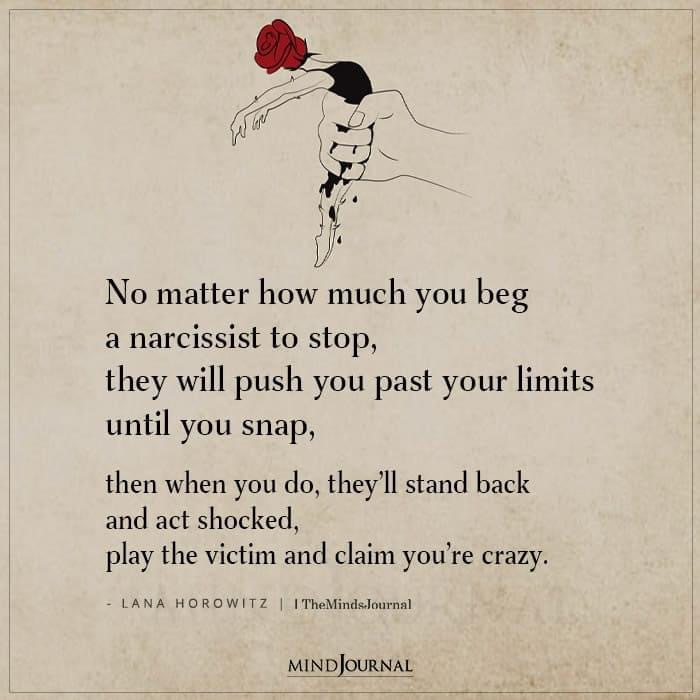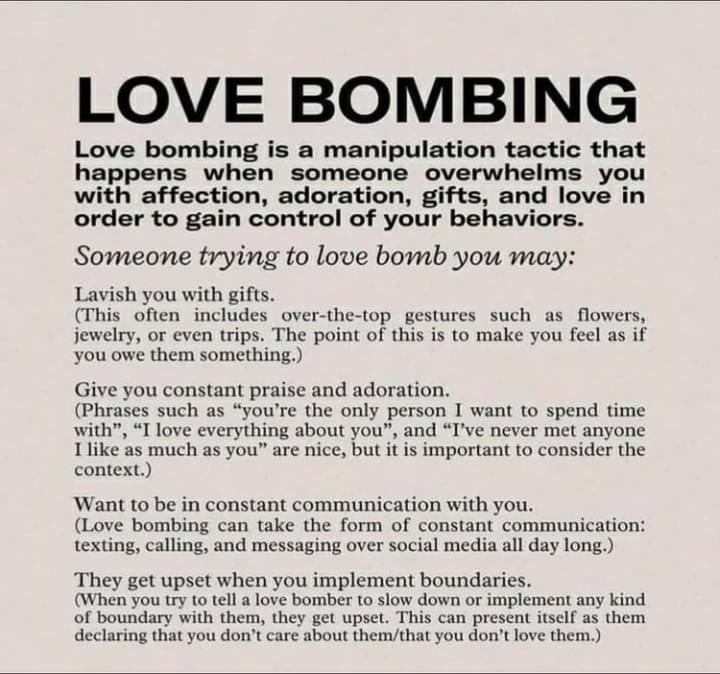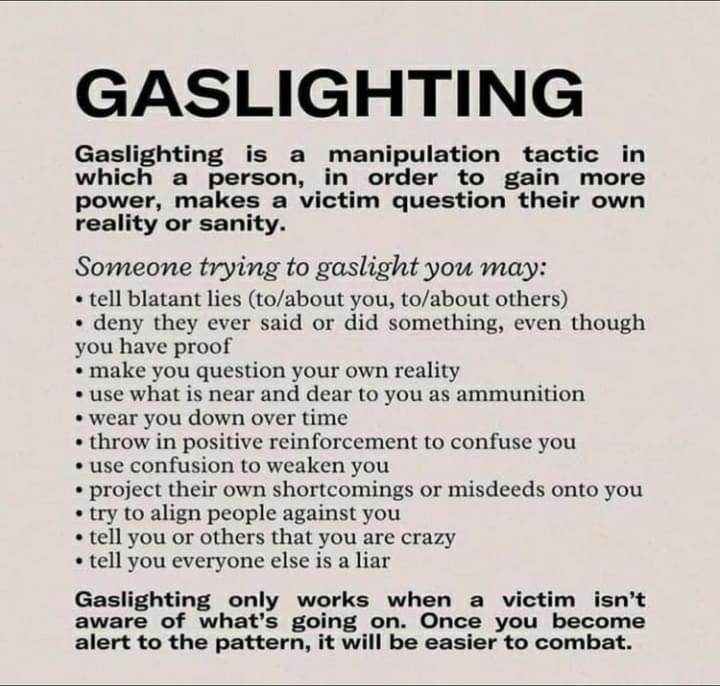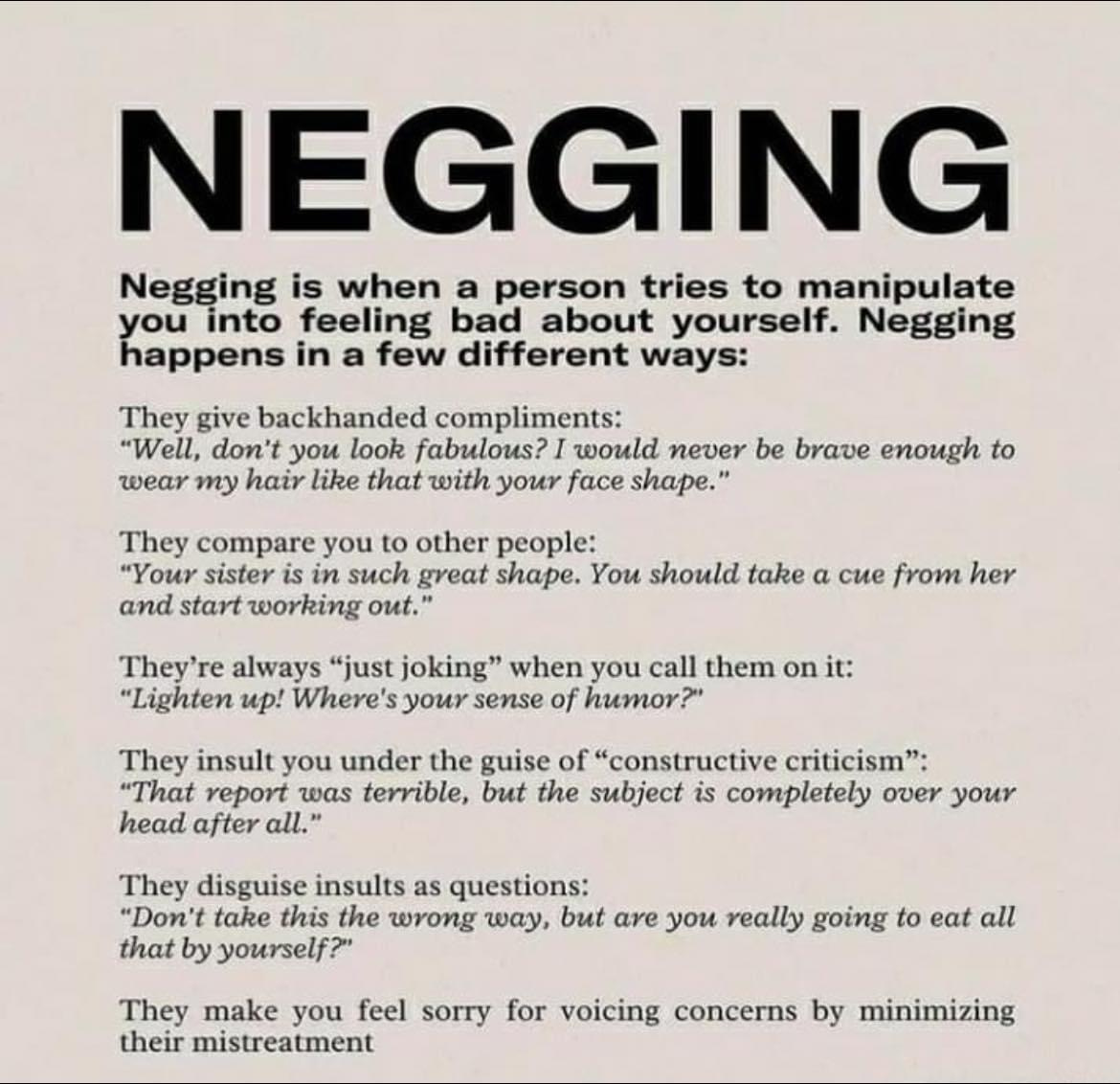Relationships are hard.
A huge skill to checking in on the health of your love and relationships, is to remember in every relationship there are three relationships. There is the one with yourself, the one your partner has with themselves, and then the one you have with each other. So often we only think about the one with have with each other. We don’t realize that so many of the challenges in our relationship are because of our relationship with ourselves and our partner’s relationship with themselves. We think, “I’m doing everything, but they don’t feel better!” But that’s because they’re going through something internally. We think, “I’m giving them everything! I’m doing everything they need. I’m here supporting them and fighting for them.” But if they’ve got something going on internally, they can’t even receive any of that effort. So often we look at it through the lens of “it’s just me and them.” And that’s just not true.
Psychologically speaking, narcissism is a personality trait that every person possesses to some degree. Like any characteristic, it exists on a spectrum. We all fall somewhere along the narcissism continuum.
When dealing with someone who crosses over the threshold of “normal traits” of narcissism is when life seems to be incredibly muddy and painful. They will often deploy a variety of narcissistic relationship patterns such as manipulation, charismatic, and exploitational tactics in order to ensure that their own needs and wants are met. A spouse may be the subject of their manipulation and abuse, while your partner treats everyone else positively.
Have you ever argued with a narcissist about the “facts” of a situation?! This is often one of the first warning signs that you’re dealing with a narcissist- You get caught up in these strange conversations where you’re arguing about what’s “real.”
Instead of debating opinions, you’re debating facts.
-What was said.
-What wasn’t said.
-How they responded.
-What you two agreed on.
You can literally spend hours, days, weeks, or months trying to get them to SEE and ACCEPT reality! But what you usually don’t realize at this point in the relationship…is that narcissists don’t care about the facts. They don’t care about what’s true. They only care about what they can get away with. They care about what fits their narrative. They care about how they’re perceived by others.
So if you’re hoping to get them to admit to ANY facts that would:
-Make them look bad
-Prove they lied
-Implicate them
You’re wasting your breath. The only “facts” narcissists care about are the ones that match their narrative. Meaning they may not be “facts” at all…If you’ve ever had these crazy-making conversations, you know how absolutely exhausting it is!
Narcissistic Abuse cited from Choosing Therapy:
Common narcissistic abuse tactics include:
Hoovering: Hoovering refers to manipulative actions used to “suck” a person back into a relationship, such as excessive gift-giving or promising to change.
Love bombing: Love bombing occurs when a narcissist showers another person with gifts, praise, and affection to draw them into a relationship. For example, love bombers may say this individual is their “soul mate” soon after meeting them.
Gaslighting: Narcissistic gaslighting purposefully instills self-doubt in victims. A narcissist may deny events by saying, “It didn’t happen like that,” “You must be remembering it wrong,” or other similar phrases. In turn, the victim will question their reality and sanity.
Triangulation: A narcissist uses narcissistic triangulation to turn an argument in their favor. They will do so by bringing a third person into the conflict and having this person choose their “side.”
Silent treatment: Silent treatments are a cruel form of emotional abuse used to punish a person. While not all people who use the silent treatment have NPD, this is always an unhealthy way to handle conflict or disagreements.
Scapegoating: Scapegoating often occurs in narcissistic family structures. This behavior deflects blame for family dysfunction onto one member
Passive-aggressive behavior: Passive-aggressive behavior refers to indirect communication or actions rather than open expressions of disagreement or negative emotions.
Lies: Common signs of narcissistic abuse often include frequent lying. Narcissists may lie about who they were hanging out with or about significant conversations and events. Often, they create false realities to distract from their negative traits and characteristics.
Smear campaigns: Narcissists sometimes spread lies and misinformation to discredit a victim and harm their reputation, an action referred to as a narcissistic smear campaign.
One of the most common tactics abusers use is to shift blame for the abuse onto the victim. The abuser will claim the victim is the abuser because of the reaction the victim has. The abuser may even attempt to convince the victim that there is nothing worth reacting over and that the victim is overreacting to the abuse. What the victim is actually experiencing is called reactive abuse.
Reactive abuse occurs when the victim reacts to the abuse they are experiencing. The victim may scream, toss out insults, or even lash out physically at the abuser. The abuser then retaliates by telling the victim that they are, in fact, the abuser. Abusers rely on this “reactive abuse” because it is their “proof” that the victim is unstable and mentally ill. The abuser will hold these reactions against the victims indefinitely. It could be years later and the abuser will say, “Well, back in (whatever time period), you had this reaction and acted all crazy. You’re the crazy one! You need help.”
When you see yourself reacting in this manner, many times you begin to say to yourself, “Whoa, this isn’t me. This isn’t how I am normally.” When you begin to ask yourself those questions, you know something is not right with the relationship. That’s what the abuser wants – to make you question yourself, your character, and your integrity. The abusers bank on the victim reacting negatively to their tactics. When you begin to truly think about how you respond to them, you are taking back some power. Respond and not react. To react is almost like an automatic thing – it’s the fight or flight response. But responding involves a thought process that requires us to really consider our thoughts and actions.
Within the realm of domestic violence, there is always one who initiates or instigates the problems in the relationship. It comes back to that one person needing power and control over their victim. That’s what abuse is – the imbalance of power. The abuser, however, would like you to believe otherwise and say, “Well, we were abusive to each other. It’s mutual abuse.” It’s because the abusers will never accept responsibility for their actions and instead shift blame for the abuse onto us.
Trauma bonding makes you psychologically addicted to your abuser. This explains why trying to stop contact feels like you are coming off a drug.
Survivors and perpetrators of domestic abuse will often form trauma bonds where they both become emotionally hooked into the relationship; this can make it extremely difficult for the survivor to unlock and escape from the abuse.
Trauma bonding happens when an abuser provides the survivor with intermittent rewards and punishments – a psychological conditioning develops, the survivor becomes snared into the relationship, ever hopeful of the next reward and a reprieve from the suffering. Powerful emotional bonds develop that are extremely resistant to change. Trauma bonding involves cycles of abuse – following an abusive incident or series of incidents, perpetrators will often offer a kind gesture to try to recover the situation. A period of relative peace can follow before tensions start to re-build and the abuse inevitably starts again.
Survivors will try their best not to anger their partner, to do everything expected of them, they will remember how loving their partner can be and was in the early days of the relationship, hoping for the return of that behavior. They understand the change has happened, but not why it is occurring. They believe they just need to understand what they are doing wrong in order to bring back the loving part of the relationship.
If they do manage to break free, all the narcissist has to do is go back to that courtship phase to win them back. The more the partner reaches out to the narcissist for love, recognition, and approval, the more the trauma bond is strengthened. This also means they will stay in the relationship when the abuse escalates, creating a destructive cycle. They think they just need to work out what they’re doing wrong to bring back the loving part of their relationship. It won’t occur to them that the loving gestures were always manipulative and never genuine – their partner being incapable of real love.
Trauma bonding feels like you’ve broken me into pieces but you’re the only one who can fix me.
Trauma bonding has similarities with Stockholm Syndrome where people held captive develop feelings of trust and affection towards their captors. Both Trauma-Bonding and Stockholm Syndrome are survival strategies that develop to help survive an emotionally or physically dangerous situation. Women will hold onto toxic and abusive relationships and become more vulnerable to trauma bonding for a variety of reasons.
Being in the abusive relationship will damage self-esteem, sometimes to the point the woman will believe she deserves the abuse she is being subjected to – the abuse becomes her normal despite it making her deeply unhappy, she may stop aspiring to anything better as she doesn’t feel worthy of love. The longer the survivor remains with the narcissistic abuser, the more difficult it is to break the trauma bond.
Trauma, fear and abandonment actually increase feelings of attachment. The more you have been hurt by him, the more intensely attached you will be. Trauma bonds are hard to break but even harder to live with.
The hardest part of this cycle is that is it addictive, your body is constantly alternating between hits of dopamine and long periods of cortisol. It is so incredibly difficult to leave. You love your person, or at least the pleasant person they used to be.
Below is an excerpt from Lisa Johnson from BTGO:
Physically removing yourself is often not the most difficult part of getting out of a toxic relationship. What many people who have never been through it don’t realize is that once you’re out, an abuser’s voice remains in your head.
Getting out of an abusive relationship is extremely difficult, and staying out is even harder. On average, it takes seven to nine attempts to do so successfully. We have known people who spent years planning an exit, even putting a six-month deposit down on an apartment, only to return back to a terrible situation. Coercive control is powerful.
It can be incredibly frustrating to close family and friends to see a loved one willingly return back to a toxic partner. Often, outsiders feel helpless and eventually give up on a victim.
What we ourselves need to understand is that what draws us back into these awful situations can be temporarily beyond our control. Our brains have literally become “addicted” to the power dynamic in a toxic relationship.
I spoke with Texas author, coach, and substance abuse therapist Matt Phifer, who noted the chemical addictions present in an emotionally abusive relationship. Here’s Matt, in part of our conversation:
I know a lot of people say it’s like an addiction, but when I was in the substance abuse world, there was actual evidence to support that it literally is. It’s the same part of the brain that functions with addiction.
It’s debatable whether a trauma bond or heroin addiction is more potent and more addictive.
When you actually look at the parallels between the two, you start to see that there are a lot of similarities.
One is the fact that whenever you start to pull away from that person, you start to miss them in an unhealthy way.
That’s just like someone who struggles with heroin withdrawal symptoms. And you think that the only way that they’re going to overcome it is if they use one more time, and then they’re going to feel better about themselves, and they don’t.
It’s the same thing here. You think that if you talk to them one more time, if you go through their social media or if you see them, or try to reason with them, that it’s going to make you feel better.
And it doesn’t. It just continues to take you further and further down that cycle.
There’s also all that shame associated with this. We hear people all the time, after attempting to get away, and then going back, always say, “I feel so stupid.” They blame themselves. And people who don’t understand domestic violence, like family and friends, also say, “Why do you keep going back to this person that’s treating you terribly?” It doesn’t make sense to them.
It all begins with what starts out initially in childhood. No one’s stupid. You’re just so used to being comfortable in chaos. And so you grow up in that system, you end up with someone, and it’s almost like your grief from childhood, and that’s when the addiction starts. Oftentimes you feel like you need to rescue them or you feel, in some way, that they need to rescue you.
People who struggle with heroin addiction will tell you that the very first time that they used, it was the most euphoric feeling that they had ever felt in their life. And what they call it from that point forward is “chasing the very first high.”
And it’s the same thing when you’re talking about trauma bonds, and you’re talking about toxic relationships.
If you think about the beginning stages, it’s the most euphoric feeling. You think they’re your soulmate. You believe that they can’t do anything wrong.
So what happens is that when you start to see their bad behavior, you think that there’s something that you did wrong because that’s the way that you were raised. And you think that there’s some way that you can control it.
And then what happens is that you don’t want to be the one to ruin the relationship.
You think they’re just having a bad or rough day at work, and there’s some way that you can actually control it by being a nicer person, talking to them differently, being more patient, or getting into therapy.
And so you think that there’s something that you can do better, and start to come up with all these different excuses, not realizing that there’s a whole abuse cycle that’s happening.
For most people, myself included years ago, domestic violence conjures up images of physically battered women. But what we are starting to learn, especially now with coercive control legislation on the rise, is that there are many other, and certainly as, if not more potent, types of abuse.
Keep in mind that most victims of emotionally and psychologically abusive relationships have no idea of what they are dealing with, or even that they are in an unhealthy relationship. This is why education is so important. Awareness of what we are dealing with is the first step we can toward recovering from a toxic relationship. And then, and only then, perhaps we can stop blaming ourselves so much along the way…
(Note: This excerpt is from our longer live interview, “The Significant Impact of Trauma Bonding in High-Conflict Divorce, and How To Protect Yourself” with Matthew Phifer of Matt Phifer Coaching. For part II of this blog series, “I Love Pissing You Off, Because Then I Know You Still Love Me: the Insidious Nature of Narcissistic Abuse, and How to Stop Being Their Supply,” click here).
But there is a bit of encouragement to be had. I received this from my Mama, and it was the perfect devotional because I am experiencing pain.
Here Today, Gone Tomorrow
OCTOBER 26, 2023
And God will wipe away every tear from their eyes; there shall be no more death, nor sorrow, nor crying. There shall be no more pain, for the former things have passed away.
Revelation 21:4
Recommended Reading: Revelation 7:15-17
How would you define pain? Since 1968, the most widely used definition of pain in clinical settings is the one set forth by pain researcher Margo McCaffery: Pain is whatever the experiencing person says it is, existing whenever and wherever the person says it does. In other words, no one can tell another person that they are not in pain. Pain is as unique as the individuals who profess to experience it.
Think about any pain you may be experiencing now—relational pain, physical pain, emotional pain, or spiritual pain. Regardless of the kind of pain you are experiencing now, it will “soon” be over. The Bible says that in the New Jerusalem “there shall be no more pain, for the former things have passed away.” Whatever kind of pain you feel today, an eternal day is coming in which you will feel it no more if you live in the New Jerusalem. Every God-designed need and longing of the human spirit, soul, and body will be met completely in Christ.
Let today’s pain lead you to tomorrow’s pleasure in heaven.
The greatest good suffering can do for me is to increase my capacity for God.
Joni Eareckson Tada













I have learned a whole new description of a narcissist today. Wow! What a piece of work.
I have so many thoughts, that it is probably really hard to express them all.
In your writings, you have described my marriage to my husband, Brian, who was the father of three of my sons.
I thank my Heavenly Father every single day, that I had the gumption to leave him and then eventually marry the man [Mark] who helped me see [AND FEEL] what actual love is.
It's funny that as I read all your descriptions I can still FEEL what it feels like to deal with all that trauma.
AND...what is funnier is that I went to school to be a Psychiatrist and knew all that stuff and yet narcissism was not discussed a lot.
...and when you are in the thick of thin, and have convinced yourself that you love someone, all that schooling can be for naught, when you are being used and abused.